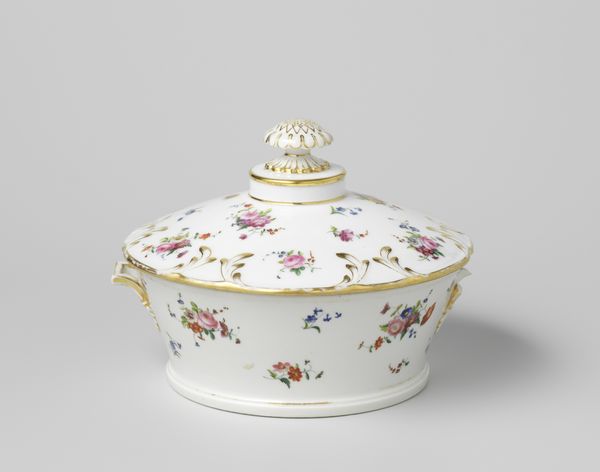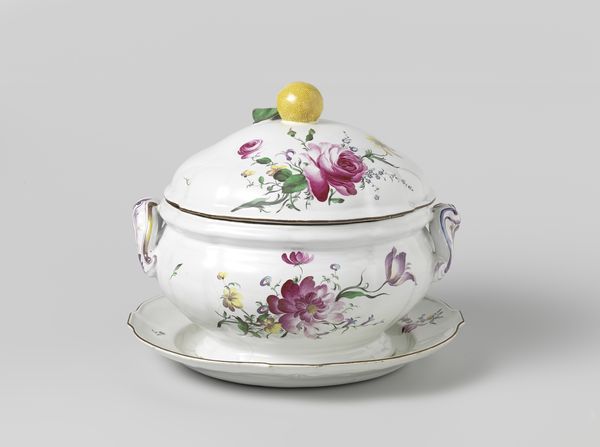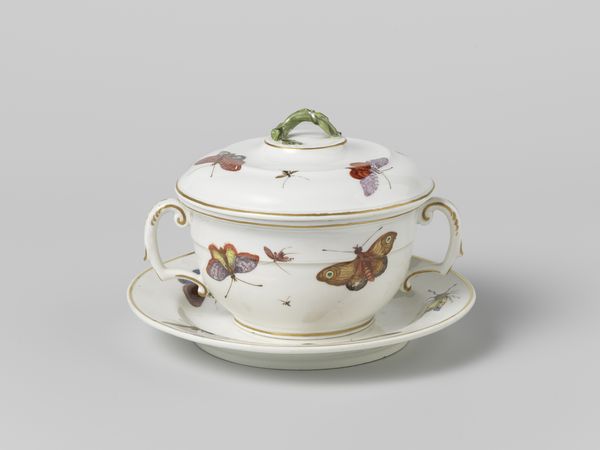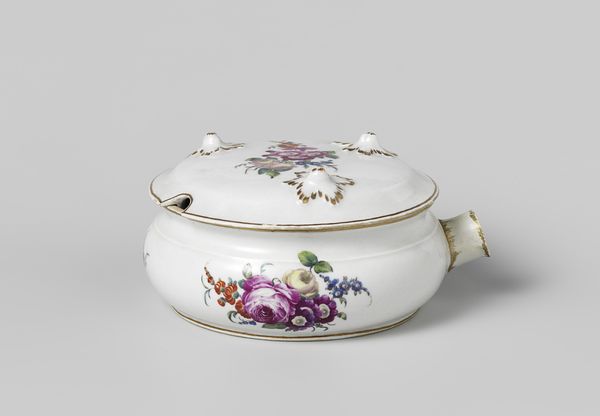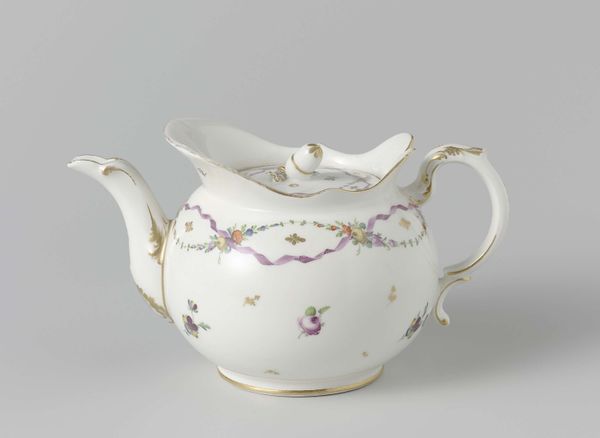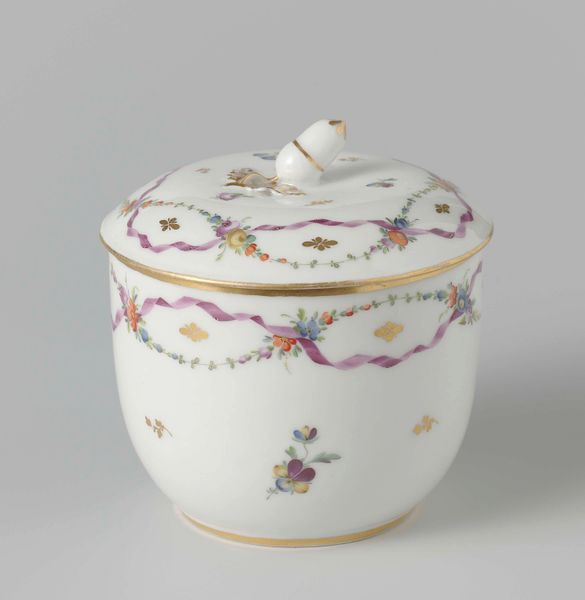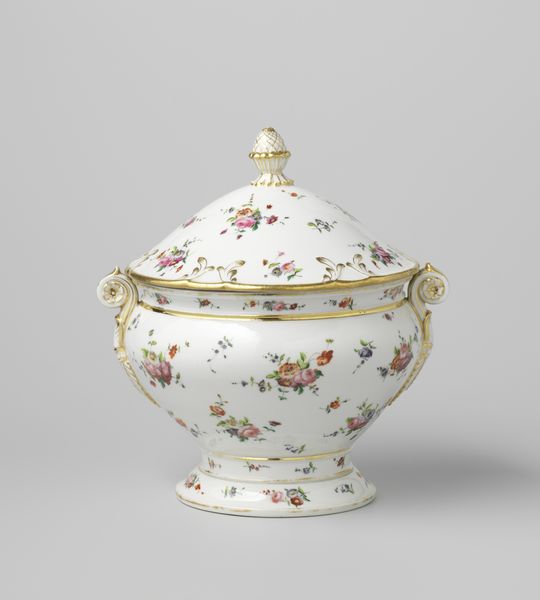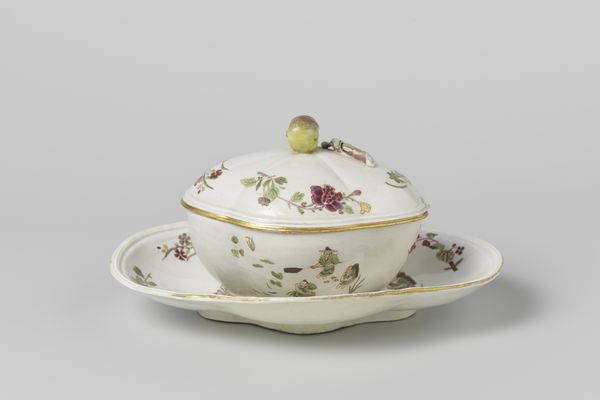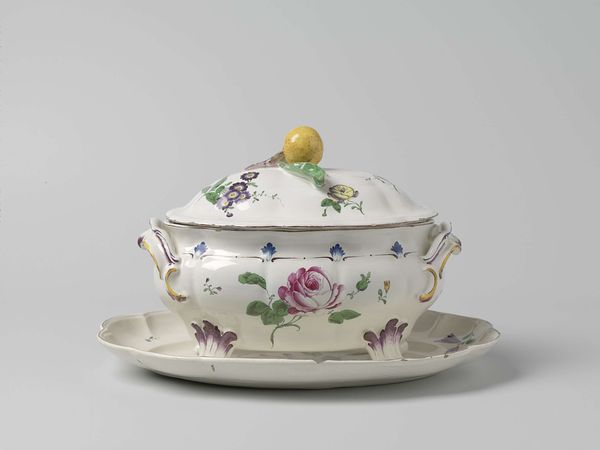
Dimensions: height 26.1 cm, height 14.5 cm, width 38 cm, depth 24 , height 11 cm, width 30.5 cm, depth 21.5 cm, height 4 cm, width 37 cm, depth 25 cm
Copyright: Rijks Museum: Open Domain
This porcelain soup tureen with lid and dish was made in Loosdrecht, likely in the late 18th century. Its delicate floral paintings and gilded trim speak to the rise of porcelain as a luxury commodity, one that signaled the wealth and taste of its owner. In the Netherlands at this time, the production of porcelain was heavily influenced by French styles, particularly that of Sèvres. Loosdrecht, as one of the earliest Dutch porcelain factories, aimed to capture the market for these luxury goods, producing items that mirrored the elegance and sophistication of their French counterparts. This tureen, with its refined decoration, reflects the aspirations of the Dutch elite to emulate the cultural standards set by the French aristocracy. Understanding this piece requires us to delve into the economic and social conditions that supported the production and consumption of luxury goods. By examining trade records, factory inventories, and household accounts, we can better understand the role of porcelain like this in shaping social status and cultural identity. The history of art is always contingent on social context.
Comments
No comments
Be the first to comment and join the conversation on the ultimate creative platform.

